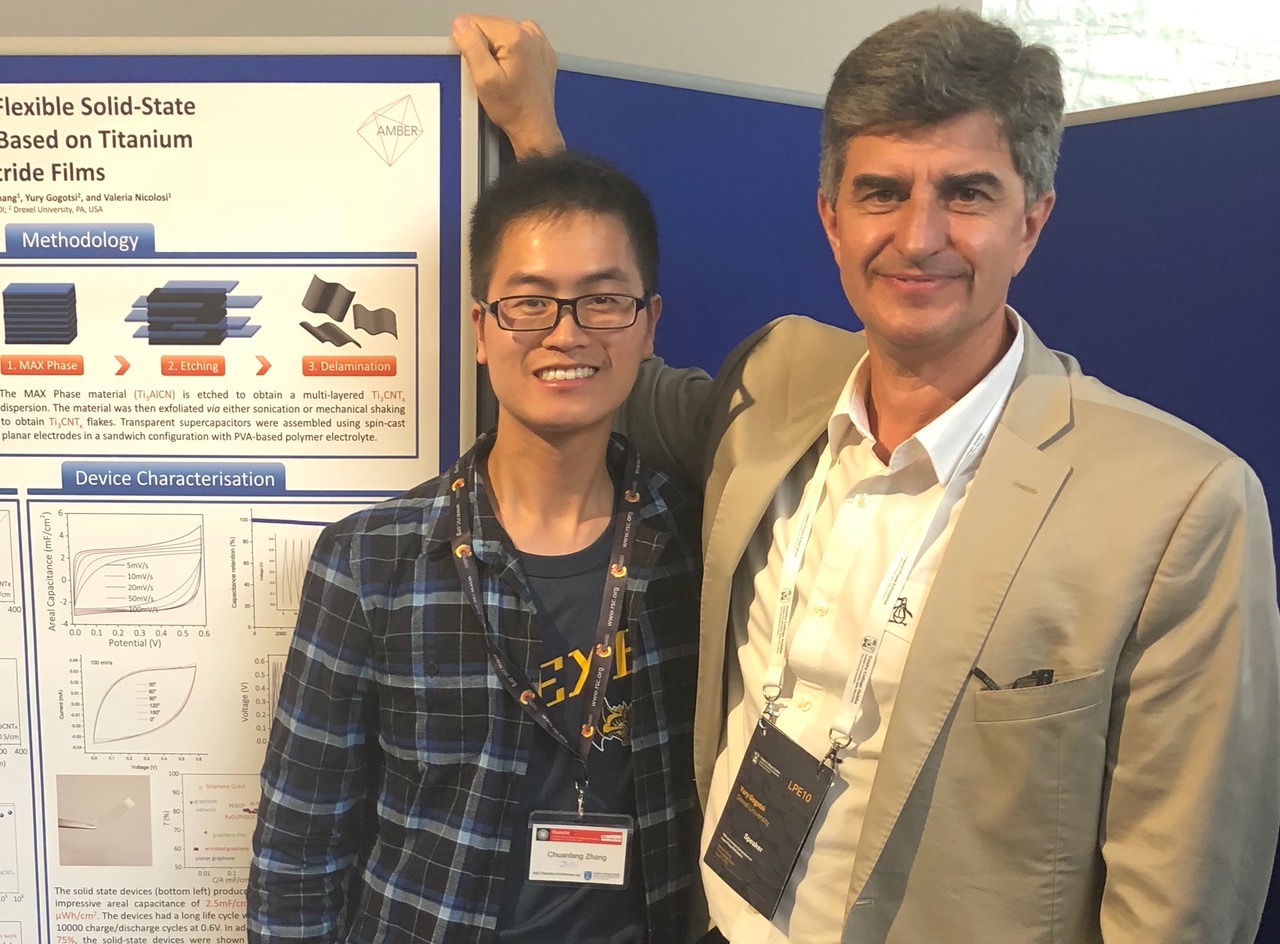
Lithium-ion batteries are used to charge anything from portable electronics to pacemakers to electric cars, but with a silicon anode — the part in which the current enters — there is a higher chance of breaking during charging. However, researchers at Drexel University are working to solve this problem.
New research from Drexel and Trinity College in Dublin, Ireland looks to extend the lithium-ion batteries’ life up to five times by controlling and preventing silicon anode expansion with MXene materials.
A battery’s charge is delivered as the ions travel from the anode to the cathode, returning to the anode when the battery is recharged. A greater ability for electrodes to send and receive ions means the battery will have a longer life. By using silicon, the anode can accept four lithium ions instead of just one. On the other hand, silicon expands up to 300 percent as it charges, causing the anode to break and the battery to malfunction.
Co-author of the study Yury Gogotsi, the director of the A.J. Drexel Nanomaterials Institute, explained that one cannot use a battery that swells during charging.
“Silicon can only be used as nanoparticles, as larger particles break during charging-discharging, and the battery degrades after just a few cycles,” he told The Triangle. “The practical solution that was found is combining silicon nanoparticles of about 100 nanometers in size (roughly, 500 times smaller than the diameter of a human hair) with carbon by either coating silicon with carbon or just mixing with graphene. Carbon conducts electrons and accommodates expansion of silicon particles.”
Gogotsi’s team combined MXene ink with powdered silicon nanoparticles to produce a hybrid silicon-MXene anode. The MXene nanosheets distribute randomly, forming a continuous network wrapped around the silicon particles. This network organizes the ions to prevent expansion while still keeping the conductivity of the silicon.
Gogotsi said the team first attempted to develop carbon encapsulated silicon anodes over a decade ago, though it was hard to produce fast results with almost no external funding and just a single student involved.
But in 2010, they made an attempt to use the titanium silicon carbide MAX phase, developed by materials science and engineering professor Michel Barsoum, in anodes of lithium ion batteries. This finally led to progress — the discovery of MXene. This, Gogotsi said, is one of the biggest and most impactful discoveries ever made at Drexel.
And since titanium carbide MXene has higher electrical conductivity and mechanical strength compared to amorphous carbon or solution-processed graphene used previously, he said they decided to check if it may work better than carbon in silicon anodes. At last, the task was accomplished in 2017, and they developed promising silicon based anodes with the help of MXene nanosheets.
Out of the 30 types of MXenes produced, the researchers selected the MXene titanium carbide and titanium carbonitride for silicon-MXene anodes. The anodes had higher lithium-ion capacity compared to graphite or silicon-carbon anodes.
“Titanium carbide MXene shows the highest electrical conductivity of all MXenes studied to date,” Gogotsi said.
Due to MXenes’ high electrical conductivity, they have been used worldwide for a broad range of applications. In addition to being outstanding material for brain electrodes, antennas and electromagnetic interference shielding, he said that their high surface area allows for their use in urea removal from blood and improving the dialysis process for patients with kidney disease. Moreover, the ability of some MXenes to transform infrared light into heat very efficiently led to their investigation in destroying cancer tumors by the method of photothermal therapy.
“And this is just the beginning of the list of their applications,” he said, explaining that MXenes can also purify water, reenforce plastics and ceramics and do many other useful things better than other materials.
Unlike most nanomaterials produced in milligram quantities in laboratories, he said that MXene anode production is easily scalable. However, a large volume of production is required to make the material inexpensive.
So while the batteries may not yet be ready for cars, he said that he’d consider MXene use for cell phones and other small battery-powered electronic devices — though he has high hopes for the future.
“Hopefully, large-volume production will push the prices down within a few years to make large-volume applications in batteries and elsewhere possible,” he said.
He said that they also hope to keep exploring other nanomaterials, including carbon materials such as graphene, nanotubes and porous carbons, often in combination with MXenes, for energy storage.
But overall, the impact of the MXene discovery cannot be overlooked, he said.
“The analysis of the literature shows that the discovery of MXenes made at Drexel in 2011 has already led to more than 1000 research publications from more than 600 organizations in 44 countries around the globe,” he said. “We hope to capitalize on this tremendous interest to MXenes, maintain Drexel leadership in the field and commercialize MXene technology for dozens of applications.”

